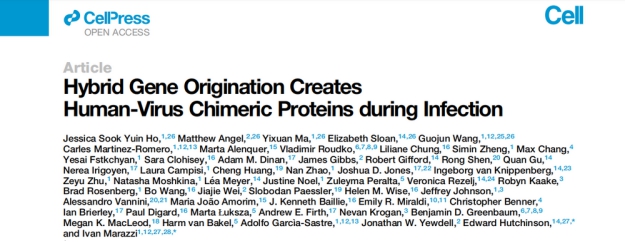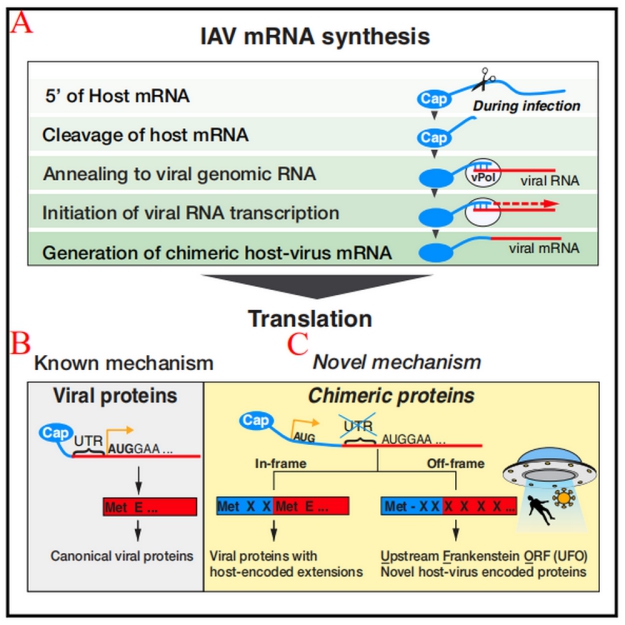On June 18, 2020, a thesis entitled Hybrid Gene Origination Creates Human-virus Chimeric Proteins During Infection published in Cell (IF=38.63), a top-level international academic journal, announced the discovery of novel virus protein encoding mechanism under a project organized by Icahn School of Medicine at Mount Sinai of the United States, which involved scientific researchers of different nationalities. Wang Guojun, Research Fellow of the National-level Key Laboratory of Grassland Livestock Reproduction Control and Breeding with Provincial and Ministerial Sponsorship, is one of the co-first authors of the thesis.

RNA virus has always been a serious threat to human health. The snatching of the 5’ cap structure of mRNA of the host cell by segmented negative RNA virus (sNSV) through the RNA polymerase that it carries creates virus mRNA, a chimeric mRNA consisting of host genes and virus genes. This process is referred to as “cap-snatching” and is a key section in the reproductive cycle of sNSV (Fig 1 A).

It was formerly believed that the protein translated by virus mRNA contains only the Open Reading Frame (ORF) of the virus genes, the role of the host mRNA lies in its 5’ cap structure which serves as an identifier for the host translation system, and other host genetic information does not have the function of synthesizing virus proteins (Fig 1 B).
The research reveals a new mechanism for virus encoded proteins.
It was discovered in the research that the host mRNA segments snatched by the virus not only play the role of 5’ cap structure but that these host mRNA segments contain initiation codon (AUG), and that the host cells can start translation from the host’s AUG and encode the chimeric proteins of two kinds of hosts and viruses. In case the host AUG and the original virus proteins are within the same reading frame, host-virus chimeric protein with extended N end is created (Fig 1 C, Left); in case the host AUG and the original virus proteins are off-frame, i.e. they are not in the same reading frame, novel host-virus encoded proteins are produced (Fig. 1 C Right).
Further research has revealed that the two kinds of chimeric proteins mentioned above may be produced when cells are infected with flu viruses, which could lead to Cell T reaction and are related to the toxicity of the viruses. The research shows that this novel virus protein encoding mechanism exist not only in flu virus but also in other human, animal and plant viruses.

